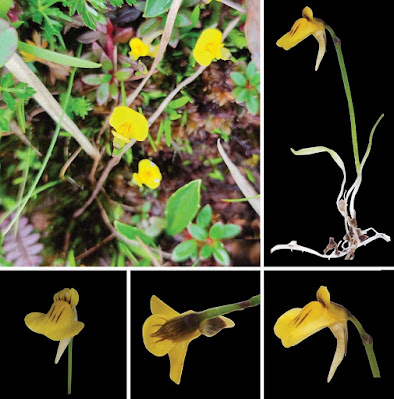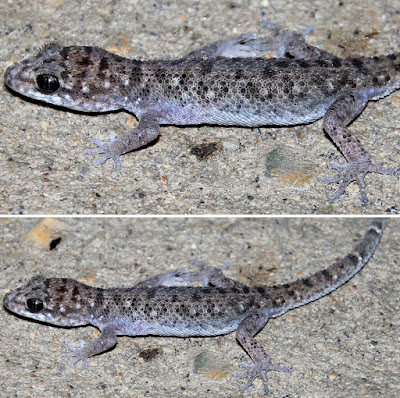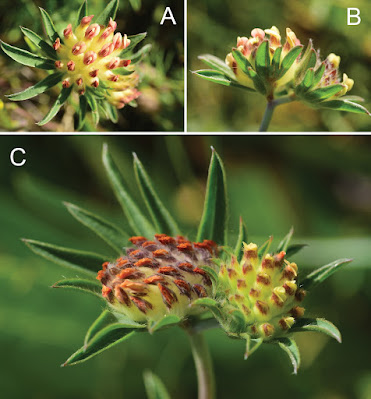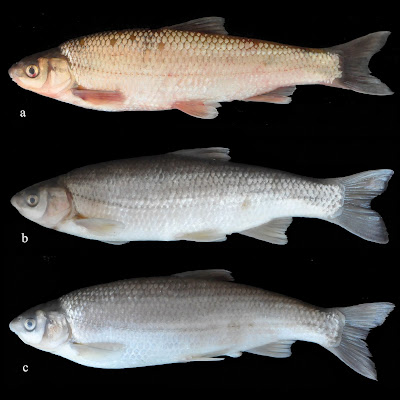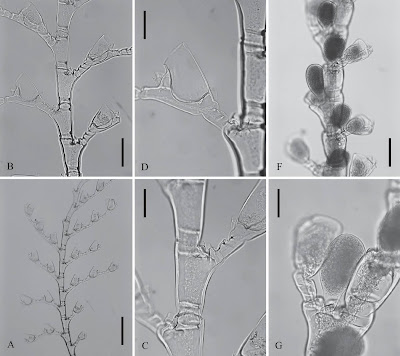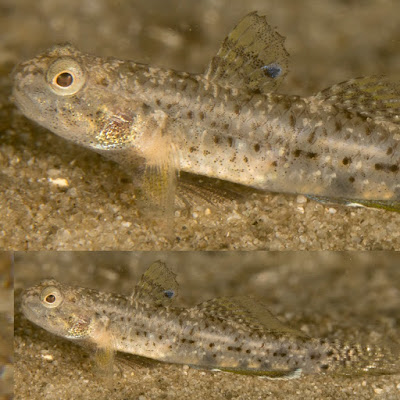[Most Recent Entries] [Calendar View]
Friday, April 30th, 2021
| Time | Event | ||||
| 4:19a | [Botany • 2021] Utricularia lihengiae (Lentibulariaceae) • A New Species from Northwest Yunnan, China Abstract Utricularia lihengiae, a new species from the Dulongjiang region of northwest Yunnan, China, is here described and illustrated. The new species belongs to the section Oligocista and is similar to U. bifida L. and U. scandens Benj., from which it can be easily distinguished by the dark purple stripe on the corolla. The new species also differs in its shorter inflorescence and the shape of the calyx lobes. Keywords: Bladderwort, insectivorous plant, taxonomy, Yunnan Province Utricularia lihengiae C. L. Long & Z. Cheng, sp. nov. “李恒挖耳草” (Li Heng Wa Er Cao) Diagnosis: U. lihengiae is similar to U. bifida L. (1753: 18), but differs by the inflorescences 2–4 cm long (vs. mostly 10–20 cm long in U. bifida), calyx upper and lower with apex acuminate (vs. calyx upper lobe, apex obtuse, calyx lower lobe, apex rounded or very shortly bifid in U. bifida), 3–5 dark purple stripes on the upper corolla lip, 3 dark purple stripes on lower corolla lip (vs. absent in the upper and lower corolla lip in U. bifida); U. lihengiae is similar to U. scandens Benj. (1847: 309), but differs by the smaller inflorescence 2–4 cm long (vs. mostly 15–35 cm long in U. scandens), peduncle of U. lihengiae is erect (vs. peduncle usually twining in U. scandens), calyx lower lobe with apex acuminate (vs. calyx lower lobe with apex rounded or very shortly bifid in U. scandens), upper calyx lobe of U. lihengiae is shorter than upper corolla lip (vs. upper calyx lobe longer than upper corolla lip in U. scandens), 3–5 dark purple stripes on the upper corolla lip, 3 dark purple stripes on lower corolla lip (vs. absent in the upper and lower corolla lip in U. scandens). Distribution and habitat: The only known locality of this taxon is in Dulongjiang Township, Gongshan Dulong and Nu Autonomous County, Northwest Yunnan, China. The site is located in an open area in a primeval forest dominated by Fagaceae, Magnoliaceae and Ericaceae. The observed population is very small, with fewer than 80 plants growing in the moss amongst damp grass on the roadside, accompanied by the moss Polytrichum commune Hedwig (1801: 88), as well as Vaccinium chaetothrix Sleumer (1941: 432), and Acorus tatarinowii Schott (1859: 101). The elevation is 2800–2900 metres above sea level. The climate here is rainy and humid, with rain falling for most of the year. Etymology: Named in honor of Prof. Li Heng, a Chinese botanist who has made significant contributions to the knowledge of the flora of Dulongjiang region. Zhuo Cheng, Qiong Fang, Fei Wang and Chun-Lin Long. 2021. Utricularia lihengiae (Lentibulariaceae), A New Species from Northwest Yunnan, China. PhytoKeys. 177: 17-24. DOI: 10.3897/phytokeys.177.63346 | ||||
| 4:50a | [Botany • 2021] Begonia rigidifolia ssp. sonhungii (Begoniaceae, sect. Platycentrum) • A New Subspecies from Limestone Hills in Central Vietnam Abstract Begonia rigidifolia Aver. ssp. sonhungii C.W.Lin (sect. Petermannia, Begoniaceae) from Central Vietnam is hereby described and illustrated as new. It resembles B. rigidifolia ssp. rigidifolia, but differs in its very sparsely puberulous (vs. glabrous), darker toned lamina that is embellished with a pale green broad band (vs. emerald green lamina with irregular radiantly arranged dark spots), stamens widely obovate (vs. obovate) and capsule with wider abaxial wing 6–10 mm (vs. 2–3 mm). Keywords: biodiversity, endemic, karst region, taxonomy, Eudicots Begonia rigidifolia Aver. ssp. sonhungii C.W.Lin 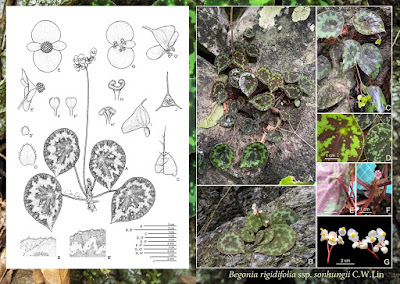 Che-Wei Lin, Luong Cong Son Phan and Ngoc Hung Nguyen. 2021. Begonia rigidifolia ssp. sonhungii (sect. Petermannia, Begoniaceae), A New Subspecies from Limestone Hills in Central Vietnam. Phytotaxa. 498(2); 139–144. DOI: 10.11646/phytotaxa.498.2.7 | ||||
| 4:54a | [Paleontology • 2021] Voay robustus • Paleogenomics Illuminates the Evolutionary History of the Extinct Holocene “horned” Crocodile of Madagascar
Abstract Ancient DNA is transforming our ability to reconstruct historical patterns and mechanisms shaping modern diversity and distributions. In particular, molecular data from extinct Holocene island faunas have revealed surprising biogeographic scenarios. Here, we recovered partial mitochondrial (mt) genomes for 1300–1400 year old specimens (n = 2) of the extinct “horned” crocodile, Voay robustus, collected from Holocene deposits in southwestern Madagascar. Phylogenetic analyses of partial mt genomes and tip-dated timetrees based on molecular, fossil, and stratigraphic data favor a sister group relationship between Voay and Crocodylus (true crocodiles). These well supported trees conflict with recent morphological systematic work that has consistently placed Voay within Osteolaeminae (dwarf crocodiles and kin) and provide evidence for likely homoplasy in crocodylian cranial anatomy and snout shape. The close relationship between Voay and Crocodylus lends additional context for understanding the biogeographic origins of these genera and refines competing hypotheses for the recent extinction of Voay from Madagascar. E. Hekkala, J. Gatesy, A. Narechania, R. Meredith, M. Russello, M. L. Aardema, E. Jensen, S. Montanari, C. Brochu, M. Norell and G. Amato. 2021. Paleogenomics Illuminates the Evolutionary History of the Extinct Holocene “horned” Crocodile of Madagascar, Voay robustus. Communications Biology. 4: 505. DOI: 10.1038/s42003-021-02017-0 Extinct 'horned' crocodile gets new spot in the tree of life New ancient DNA-based study on Madagascar crocodile suggests that modern crocodiles likely originated in Africa | ||||
| 4:56a | [Herpetology • 2021] Dixonius somchanhae • A New Species of Dixonius (Squamata: Gekkonidae) from Vientiane Capital, Laos
Abstract A new species of the gekkonid genus Dixonius is described from Huaysorn-Huaysua village, Nasaithong District, Vientiane Capital, Laos. The new species can be distinguished from all other species by a combination of the following characters: maximum SVL 47.1 mm; 19–21 longitudinal rows of dorsal tubercles at midbody; 23–26 longitudinal rows of ventrals across the abdomen; 7 or 8 supralabials, 6 in mid-orbital position; 5 or 6 infralabials; 5 or 6 precloacal pores in males, femoral pores lacking; precloacal and femoral pores absent in females; a canthal stripe running from rostrum through the eye and terminating at back of head; dorsum brown with irregular dark marks. In phylogenetic analyses, the species is recovered as the sister taxon to D. siamensis, which occurs in Laos, Thailand, and Vietnam. Genetically, the two species are approximately 9.4% divergent from each other based on the complete mitochondrial ND2 gene with six partial or complete adjacent tRNAs. It is the 12th species known in the genus Dixonius and the second Dixonius species described from Laos. Keywords: Reptilia, Dixonius somchanhae sp. nov., morphology, molecular phylogeny, taxonomy Dixonius somchanhae sp. nov. Thuong Huyen Nguyen, Vinh Quang Luu, Saly Sitthivong, Hanh Thi Ngo, Truong Quang Nguyen, Minh Duc Le and Thomas Ziegler. 2021. A New Species of Dixonius (Squamata: Gekkonidae) from Vientiane Capital, Laos. Zootaxa. 4965(2); 351–362. DOI: 10.11646/zootaxa.4965.2.8 | ||||
| 5:24a | [Botany • 2021] Anthyllis apennina (Fabaceae: Papilionoideae) • A New Species from central Apennine (Italy)
Abstract A new species of Anthyllis endemic to central Apennine growing in dry pastures on limestone in the montane belt, within Abruzzo and Lazio administrative regions (central Italy), is here described and illustrated and the IUCN assessment is proposed. This new species belongs to the morphologically very variable Anthyllis vulneraria species complex and it is close to A. pulchella (south-eastern Europe and Caucasus), but it can be clearly distinguished by its smaller flowers, mainly light yellow-coloured, bracts longer than flowers, calyx pink-coloured (usually only at apex) and size of cauline leaves and leaflets. Furthermore, the name A. pulchella is here lectotypified, by a second-step typification, on a specimen preserved at PAD. Keywords: Abruzzo, Anthyllis vulneraria species complex, Italian endemics, Lazio, Loteae, Papilionoideae, taxonomy
Anthyllis apennina F.Conti & Bartolucci, sp. nov. Diagnosis: Anthyllis apennina differs from A. pulchella by the bigger cauline leaves and leaflets, leaves evenly distributed along the flowering stem vs. concentrated in lower half, higher number of inflorescences 2–5(–10) vs. 1–2, smaller flowers with standard (7.9–)8.5–9.9(–10.3) vs. (10–)10.4–13.6(–13.8) mm long, longer bracts (12–)14–23(–26) vs. (5.8–)6.5–11(–12) mm long, longer than flowers, with longer lobes (10–)11–21.5(–24) vs. (3.2–)3.9–7.5(–9) mm long, narrowly triangular and acute to apiculate vs. more or less parallel-sided and obtuse and by the colour of flowers which are mainly light yellow or flushed with pink vs. purplish-pink or cream flushed with pink and the calyx which is mainly pink only in the upper part. Etymology: Anthyllis apennina is named after the Apennine to which the species is endemic. Habitat: Pastures in montane belt from 1200 to 1800 m a.s.l. Distribution: Central Apennine in Lazio and Abruzzo (Fig. 1). Fabio Conti and Fabrizio Bartolucci. 2021. Anthyllis apennina (Fabaceae), A New Species from central Apennine (Italy). PhytoKeys. 176: 111-129. DOI: 10.3897/phytokeys.176.62774 | ||||
| 10:01a | [Ichthyology • 2021] Chondrostoma smyrnae • A New Nase (Cypriniformes, Leuciscidae) from the Tahtalı Reservoir Drainage in the Aegean Sea Basin
Abstract Chondrostoma smyrnae, a new species, from the Tahtalı reservoir drainage is distinguished by having a slightly arched lower jaw with a well-developed keratinised edge, a deep and cylindric body, a complete lateral line with 47–52+1 total scales, 8–9 scale rows between the lateral line and the dorsal-fin origin, 4 scale rows between the lateral line and the pelvic fin-origin, and 19–23 gill rakers on the first gill arch. Moreover, molecular analyses using full cyt b (1141 bp) and partial coI (652 bp) sequences of the mitochondrial genome from specimens of the new species, C. smyrnae and specimens belonging to other Chondrostoma species from central and western Anatolia demonstrated that the C. smyrnae is easily differentiated by their high pairwise genetic distances of cyt b and coI data set (>2.20 and 1.03%, respectively) and by their position in the phylogenetic trees obtained through Maximum Likelihood (ML) methodology. Key Words: Cytochrome b, Cytochrome oxidase I, freshwater fish, taxonomy, Western Anatolia Chondrostoma smyrnae sp. nov. Diagnosis: Chondrostoma smyrnae is distinguished from other species occur to adjacent basin by a cylindrical body (body width at dorsal-fin origin 16.8–19.3% SL, vs. 13.3–15.4 in C. turnai (Fig. 3d), 14.1–16.6 in C. meandrense, 12.0–16.3 in C. holmwoodii, 12.4–15.7 in C. fahirae, except C. beysehirense), a wider head (head width at anterior margin of eye 55–65% HL, vs. 42–54), by having less lateral line scales (48–53 vs. 60–67 in C. beysehirense, 60–66 in C. holmwoodii and 56–60 in meandrense, except C. turnai and C. fahirae). Chondrostoma smyrnae is further distinguished from C. turnai by the absence keel between pelvic fin-origin and anus (vs. present in specimens larger than 160 mm SL), a straight or slightly arched lower jaw (vs. arched), more total lateral line scales (48–53, vs. 44–51), and fewer gill rakers on first gill arch (19–23, vs. 22–27). Also, C. smyrnae further differs from C. turnai by the shape of jaws, hyomandibular, quadrate and the fifth brachial gill arc. In C. smyrnae, the dentary thick and coronoid process inclined forward (vs. thin and coronoid process nearly vertical); premaxilla very deep and posterior edge short (vs. slender and posterior edge long); hyomandibular long and narrow (vs. short and wide), the fifth brachial gill arc wide angle (vs. narrow angle) and pharyngeal teeth wide (vs. thin); outer margin of quadrate slightly pointed (vs. rounded) (Figs 4, 5). Etymology: The species is named for Smyrna, the historic name of the city known today as Izmir. A noun in genitive, indeclinable. Fahrettin Küçük, Yılmaz Çiftçi, Salim Serkan Güçlü and Davut Turan. 2021. Chondrostoma smyrnae, A New Nase from the Tahtalı Reservoir Drainage in the Aegean Sea Basin (Teleostei, Leuciscidae). Zoosystematics and Evolution. 97(1): 235-248. DOI: 10.3897/zse.97.63691 | ||||
| 10:38a | [Cnidaria • 2020] Plumularia roxanae • A New Epiphytic Hydroid (Hydrozoa: Plumulariidae) from the Indo-Pacific
Abstract A new epiphytic, small-sized species of Plumularia Lamarck, 1816, P. roxanae sp. nov., is described based on fertile material from Bali, Indonesia. Its deep hydrothecae are characteristically narrowed distally through a distinctive hypertrophy of the free portion of their adaxial wall. Its minute gonothecae, however, are comparable in shape and size to those of the well-known, circumtropical P. floridana Nutting, 1900. Plumularia roxanae sp. nov. Diagnosis: Small-sized, epiphytic Plumularia arising from stolon with perisarcal spurs, giving rise to monosiphonic stems divided homomerously by transverse nodes into rather short, collinear internodes, each with a subterminal cladial apophysis provided with an inconspicuous adaxial mamelon and a pair of axillar nematothecae; cladia heteromerously segmented by alternating straight and oblique nodes into short, ahydrothecate internodes occasionally provided with a nematotheca, and up to three, comparatively longer hydrothecate internodes accommodating a centrally-placed hydrotheca and its three associated nematothecae; hydrotheca deep, saccate, partly adnate, distal portion distinctly constricted through the hypertrophy of the free adaxial wall that adopts a triangular shape, considerably reducing the thecal lumen; abaxial wall slightly convex; gonothecae in two closely-set, parallel rows along the stem, borne on the cladial apophyses, minute, ovoid, thick-walled. Etymology: It is my great pleasure to dedicate this new species to the memory of my late mother, Roxana S. Galea (née Florescu, 5 Oct. 1946 – 18 Jan. 1994), a Romanian biologist, who passed on to me her interest for natural sciences. Horia R. Galea. 2020. Plumularia roxanae, A New Epiphytic Hydroid (Cnidaria: Hydrozoa: Plumulariidae) from the Indo-Pacific. Revue suisse de Zoologie. 127(2); 367-376. DOI: 10.35929/RSZ.0026 | ||||
| 1:30p | [Ichthyology • 2021] A Revision of the Gobiid fish Genus Pseudogobius (Gobiidae, Tridentigerinae), with Description of Seven New Species from Australia and South-east Asia
Abstract The tridentigerine genus Pseudogobius is widespread, from temperate to tropical areas of the Indo-west Pacific. A morphological review of the genus was carried out, with the initial focus on South-east Asian and Australian species. There are about 21 nominal species in the genus; however, the type specimens for some nominal species are missing. Our work recognises 15 valid species so far, including seven new species, which are described herein: Pseudogobius aquilonius n. sp., P. cinctus n. sp., P. eos n. sp., P. hoesei n. sp., P. jeffi n. sp., P. rhizophora n. sp. and P. verticalis n. sp. We also conclude that P. poicilosoma (Bleeker, 1849) is the senior synonym of P. javanicus (Bleeker, 1856). Pseudogobius poicilosoma, P. gastrospilos (Bleeker, 1853) and P. javanicus are accepted here as conspecific, although the types are in poor condition (note that all three names were given to specimens collected within close proximity to each other in coastal Java, Indonesia). A key to valid species is presented. The revision benefited from an adaptive feedback loop with companion genetic analyses, with the most comprehensive data available for the Australian region. Broader preliminary genetic data suggest the potential for recognition of additional cryptic species, with the current study providing a platform for future systematic work. Pseudogobius are a prominent part of estuarine biodiversity in the Indo-west Pacific, and this study helps to highlight the need to better understand the taxonomy and conservation requirements of cryptobenthic fishes. Keywords: Pisces, Indo-west Pacific, morphology, estuarine, biodiversity Helen K. Larson and Michael P. Hammer. 2021. A Revision of the Gobiid fish Genus Pseudogobius (Teleostei, Gobiidae, Tridentigerinae), with Description of Seven New Species from Australia and South-east Asia. Zootaxa. 4961(1); 1-85. DOI: 10.11646/zootaxa.4961.1.1 Meet the gobies A new paper clarifies the taxonomic status of the snubnose gobies, including seven newly-described species. |
| << Previous Day |
2021/04/30 [Calendar] |
Next Day >> |
